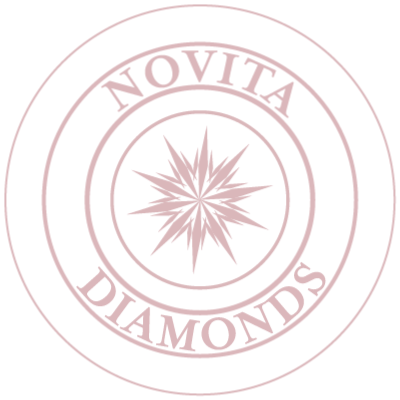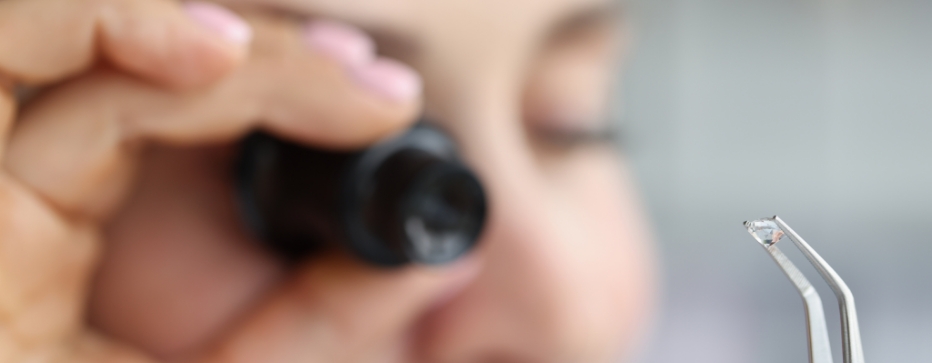BOOK AN APPOINTMENT


The concept of producing authentic diamonds in a laboratory has captivated researchers and engineers since the late 1800s. Nevertheless, it remained a mere aspiration until 1955 when General Electrics demonstrated that it was finally feasible to generate a fully lab grown diamond. Unfortunately, these diamonds were minuscule and of subpar quality, far from the diamonds people were familiar with. For the following 50 years, lab grown diamonds remained inferior and unusable, relegated to industrial applications. However, everything would soon change at the turn of the millennium when the technology necessary for cultivating high-quality gem-like diamonds reliably advanced significantly.
While it takes forces of nature thousands of years of incredibly high pressure and heat to produce a diamond from the earth, a laboratory emulates those conditions and accelerates the process considerably to create a lab grown diamond.
A lab grown diamond and its mined counterpart are entirely identical, even the best gemmologist cannot differentiate them because lab grown diamonds have the same molecular and chemical composition, physical, and optical properties as their mined equivalents. However, the same cannot be said for any of the diamond imitations or simulants. To gain a better understanding of what distinguishes a diamond from an imitation, let's delve deeper into what makes a diamond truly a diamond.
In its simplest form, diamonds are pure carbon in a unique solid state. Diamonds are just one of several different forms of solid carbon, known as allotropes, that can occur depending on the type of chemical bonds present. The crystalline form of carbon allotropes is diamonds, which makes them one of the few gems composed of a single element, typically about 99.95% carbon. The other 0.05% may consist of trace elements, such as atoms of other elements like boron and nitrogen, which are not essential to the diamond's chemistry or structure, but still contribute to the diamond's shape or color. Both mined and lab grown diamonds possess these trace elements naturally as a result of their creation process, including radiation exposure.
The only distinction between lab diamonds and mined diamonds is their price, which is a significant one. On average, lab grown diamonds are astonishingly 75% cheaper than mined diamonds. Despite the deliberate misinformation being spread online, the price difference is not due to a discrepancy in quality. Instead, it stems from the healthy competition between labs that produce lab grown diamonds, in contrast to the anti-consumer monopolies that have long dominated the mining of diamonds. To put this price difference into perspective, if a mined diamond costs $10,000, a lab grown diamond with comparable characteristics and quality would cost around $3,000, resulting in significant savings for customers.

Unlike other pure elements like copper or iron, mined diamonds are inherently untraceable. Conversely, a lab grown diamond can always be traced back to the source lab that created it. The harsh reality of mined diamonds is that despite the diamond companies' convincing claims, with reassuring terms such as "clean origin" or "conflict-free," the true origins of a mined diamond can never be confirmed with any degree of certainty. Essentially, all claims to the contrary amount to nothing more than marketing buzzwords intended to reassure customers since earth-mined diamonds change hands at least 30-40 times, from their extraction out of the mines to their final sale.
Diamonds are graded using the 4Cs - Color, Clarity, Cut, and Carat. This grading system was originally created by Robert M. Shipley, the founder of the Gemmological Institute of America (GIA). Since lab grown and mined diamonds are identical, they are graded using the same universal grading system, the 4Cs, with the same methods and tools. Once again, there are no discrepancies between lab grown diamonds and mined diamonds, except in terms of their price.
Both lab grown and mined diamonds can be graded and certified by any laboratory. In terms of certification, there is no difference at all; both types of diamonds will have the same type of information in their certificates. The only field that distinguishes lab grown diamonds from mined diamonds is the indication included in the certificate that specifies whether the diamond is "Laboratory-grown" or "Laboratory-created". This is done solely for the purpose of clarification.
The topic of Ethical versus Unethical is of utmost importance to us and to many others in our industry and beyond. This is why we have made the conscious decision to exclusively offer lab grown diamonds rather than mined ones.
Regrettably, diamond mining has been proven time and time again to not only harm the environment, but also the people who are involved in the mining process. The human cost of extracting conflict diamonds is incalculable, with entire populations being displaced and negatively impacted, including enslaved miners, their families, and their communities. Even disregarding the human toll, the process of mining for diamonds, and other stones for that matter, requires an astonishing amount of earth to be excavated and sifted through. To put this into perspective, obtaining a 1-carat, gem-quality diamond requires the excavation of 250 tonnes of dirt and ore. Destroying mountains of earth to find a small stone leads to the obliteration of habitable land, resulting in the decimation of entire ecosystems and communities.
The consequences of mining extend beyond the earth's destruction. This industry also requires a massive amount of energy, which is almost always derived from fossil fuels. The carbon emissions produced by mining are enormous, and often underreported or not reported at all. Additionally, toxic chemicals are mixed with water, often from groundwater aquifers, during ore processing and gem cleaning. The toxic slurry is then dumped onto previously fertile land, resulting in soil contamination. Drinking water sources such as rivers, ponds, and groundwater become unsuitable for human or animal consumption. As a young and responsible company, we take the debate of Ethical versus Unethical very seriously. We cannot participate in the destruction of the earth and its inhabitants. Therefore, we will always provide our customers with only the most ethical and sustainable products.

The term "Rough to Retail" is commonly used in the diamond industry to refer to the complete process that a diamond undergoes from its initial unearthing (in the case of mined diamonds) or creation (in the case of lab grown diamonds) as a rough stone until it is ultimately sold to an end customer in the retail market. Both lab grown and mined diamonds follow the same Rough to Retail path, as rough diamonds of either origin are Sorted, Cut, Polished, Graded, and ultimately, Certified in the same way. All the processes and costs involved are identical, so there is no difference between the Rough to Retail path of mined or lab grown diamonds Malaysia or any where in the world.
An interesting fact to note is that man made diamonds are, on average, more suitable for an ideal/excellent Cut grade than mined diamonds. Mined diamonds come in various shapes and sizes, and they are cut to maximize their yield, prioritizing carat weight above all else. In contrast, lab grown diamonds are cut with the primary goal of producing the most ideal cut and shape, resulting in stones with a superior cut grade on average. This is because they are specifically grown to be more ideally shaped for cutting into gemstones. Novita Diamonds large collection of diamond ring Malaysia, engagement ring Malaysia, diamond shop Malaysia and proposal ring Malaysia can be found by following those links.
